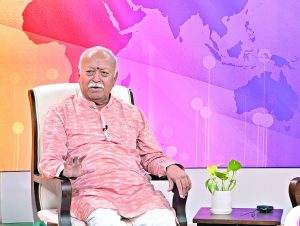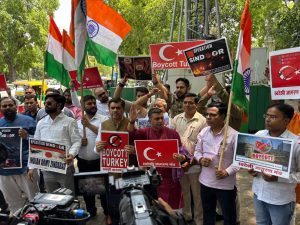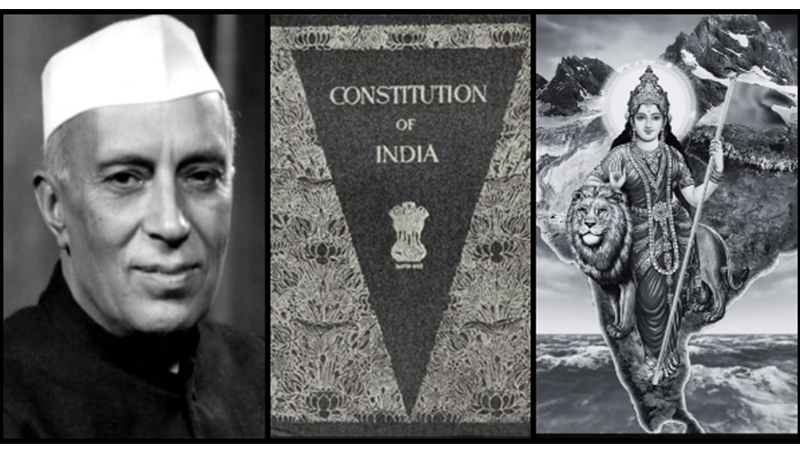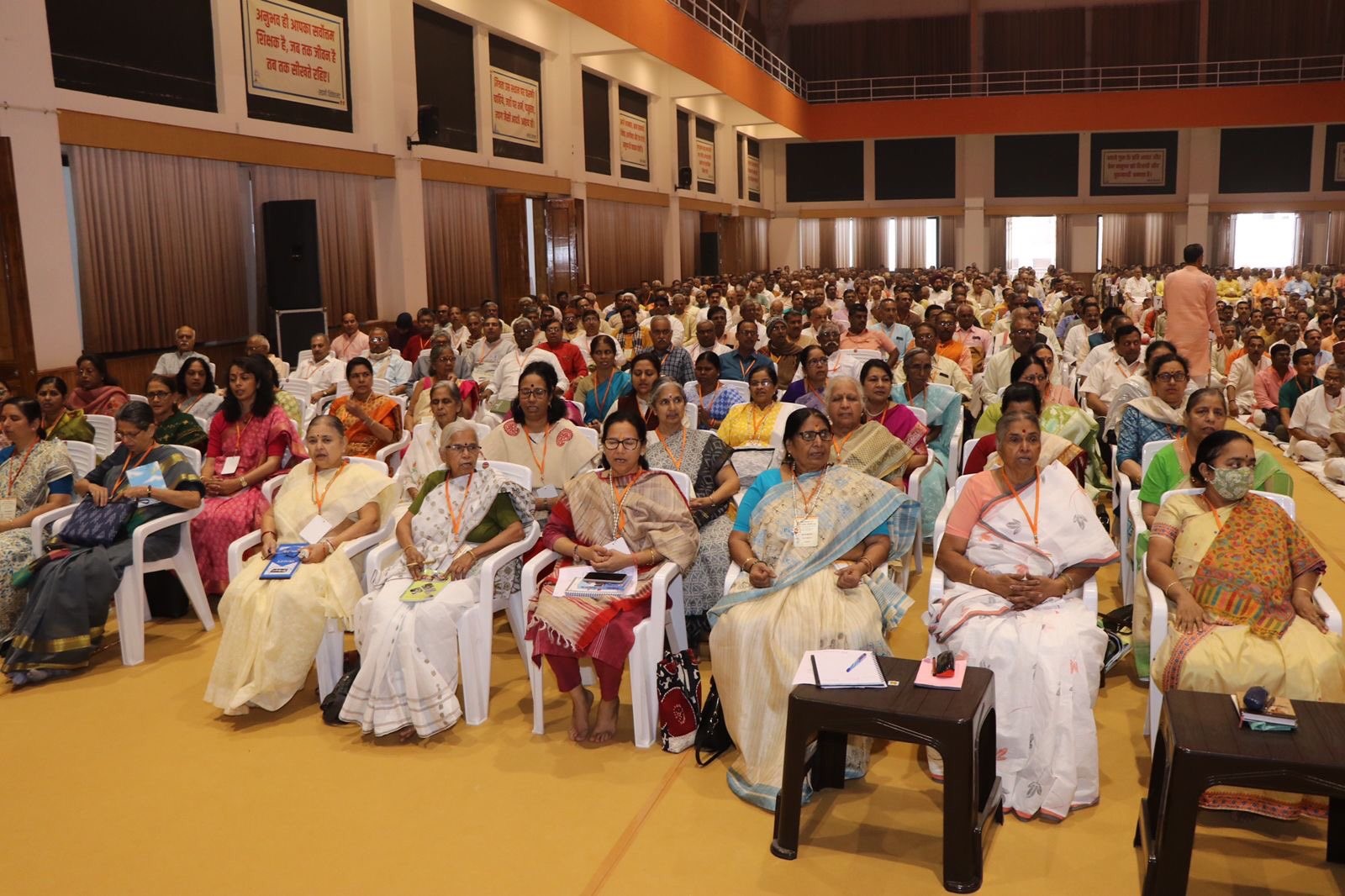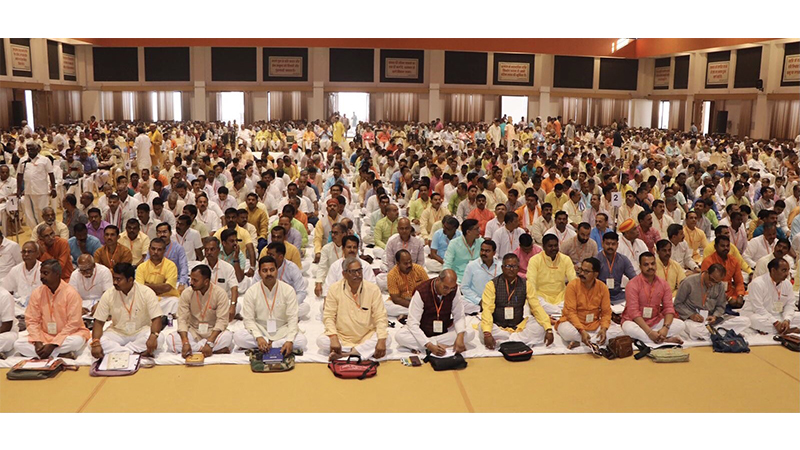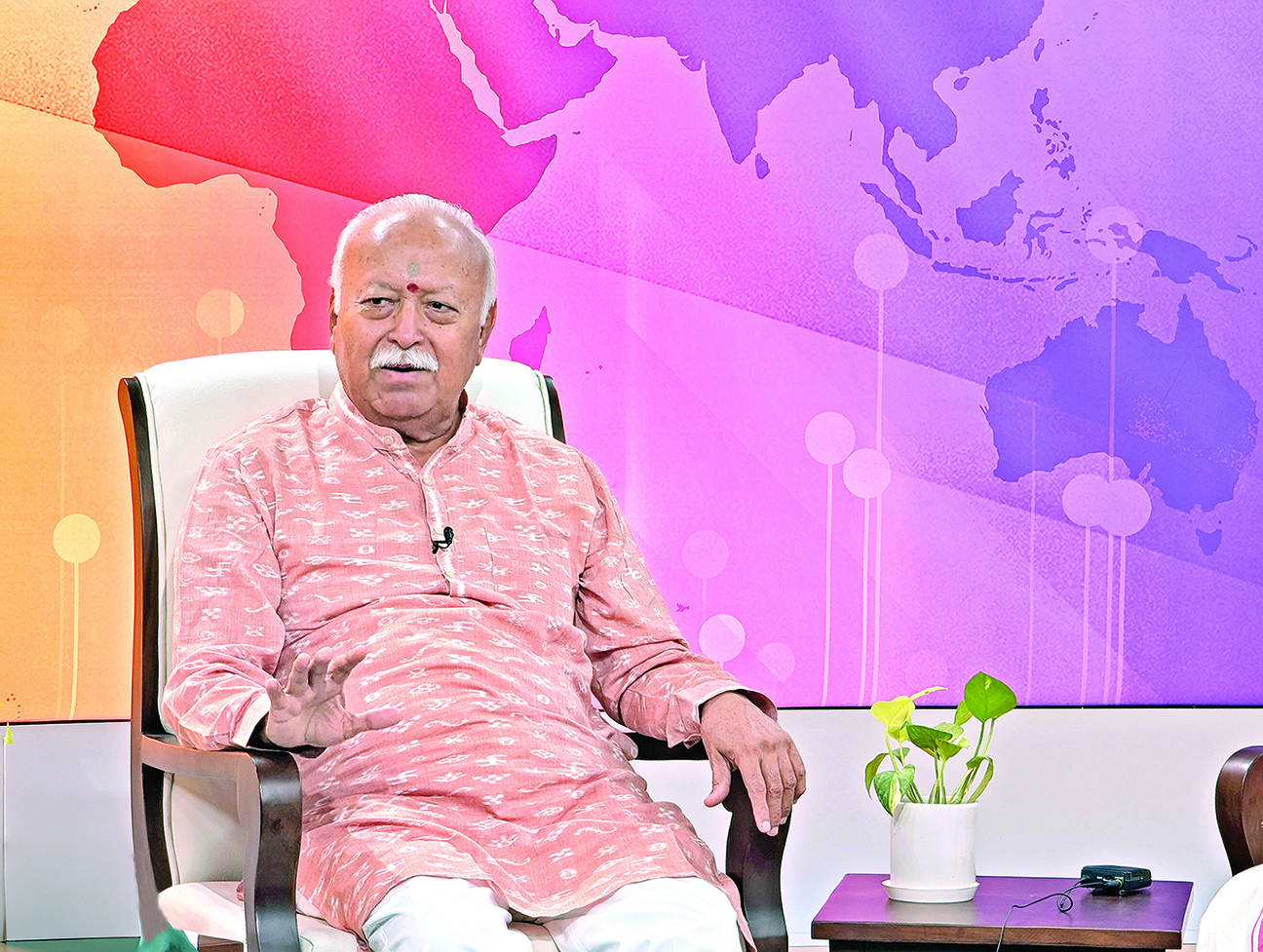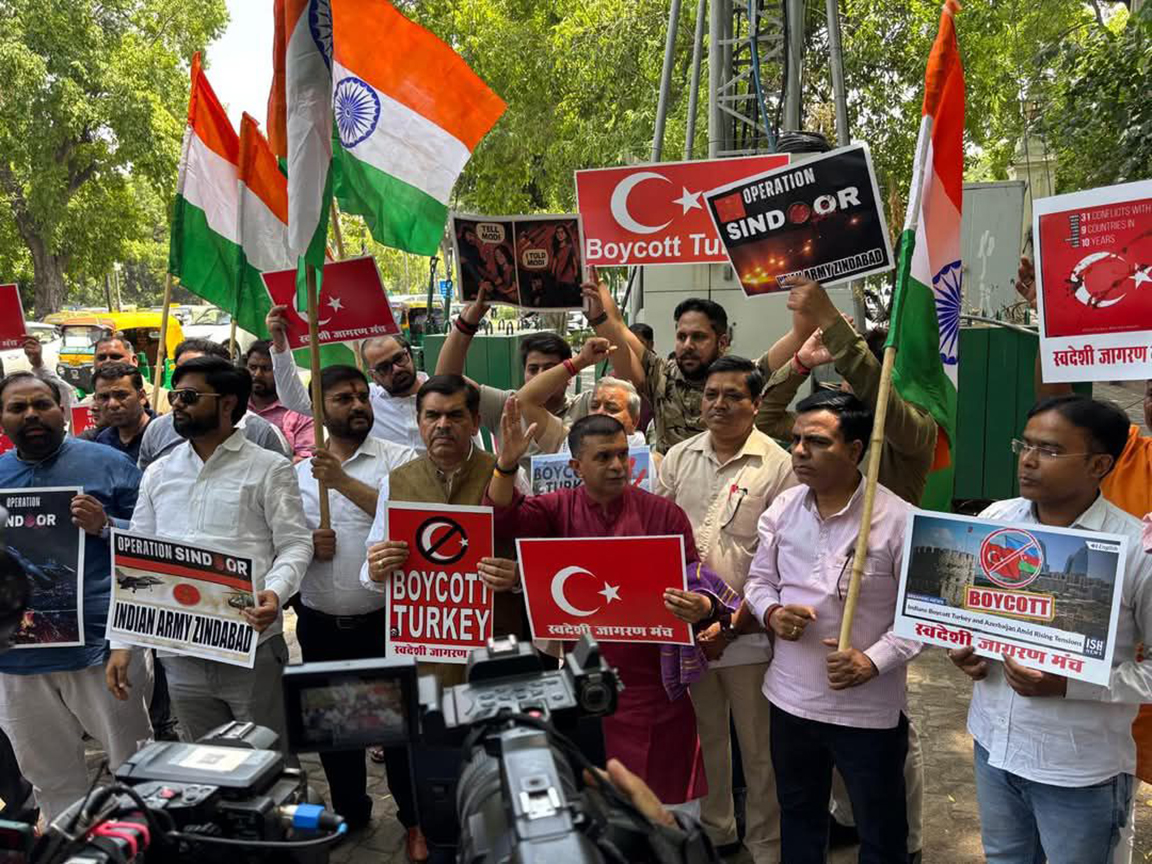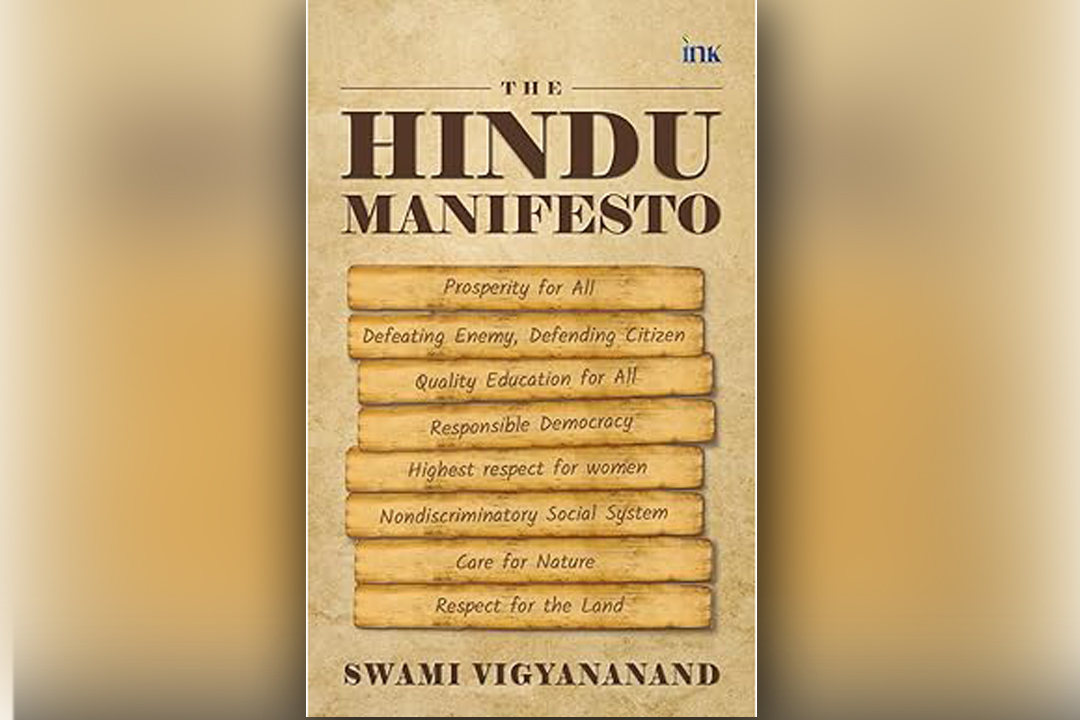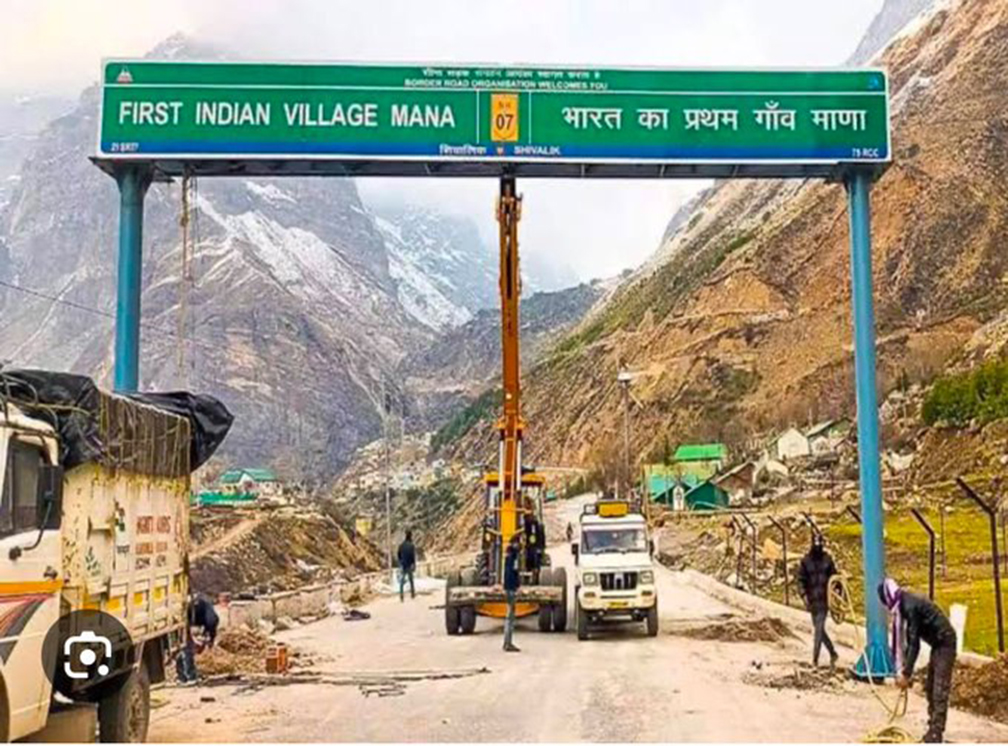Why the saffron flag is revered as ‘guru’ & worshipped by RSS swayamsevaks
Updated: February 4, 2023 6:18
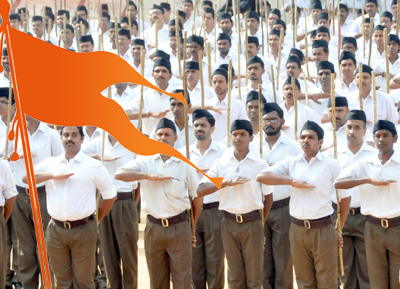
The Rashtriya Swayamsevak Sangh (RSS) celebrates six festivals every year And one of them is called ‘Guru Purnima’. On this day, the RSS swayamsevaks worship their ‘Guru’-The Saffron Flag.
More importantly around this day, every RSS Shakha organises, ‘Guru Dakshina (Offering to the Guru)’. There are primarily two reasons for organising this programme. First, to carry forward the age-old revered cultural and spiritual heritage of ‘Guru-Shishya (Master-Disciple) parampara’, a tradition of India. And second, to arrange finance for the functioning of the organisation. It was decided in the early years of the RSS that for the organisational work, the RSS would take contributions from swayamsevaks only. Thus ‘Guru Dakshina’ as an organisational activity was devised in such a way that swayamsevaks, in addition to being trained ideologically, also make contributions and this is the money which is used for organisational work.
The RSS was founded in 1925 and as it started expanding, the first ‘Gurupuja’ in the organisation was held in 1928, where the ‘Bhagwa Dhwaj (saffron flag)’, was formally worshipped as the ‘Guru’ for the first time. Since then, there has been no break in this tradition and the Saffron Flag continues to occupy the highest pedestal in the RSS hierarchy. It is the ‘Supreme’ entity, even above the Sarsanghchalak (RSS Chief).
Why worship the Saffron Flag
The Saffron Flag, commonly known as, ‘Bhagwa Dhwaj’, is considered to be the ‘Guru’ (the Master) by all swayamsevaks. When the RSS was started, several swayamsevaks wanted its founder Dr. Hedgewar to be designated as the ‘Guru’, as he was the most revered figure amongst them and every swayamsevak looked up to him as an ideal. But Dr. Hedgewar decided that the Saffron Flag should be the ‘Guru’. Every year on the day of ‘Vyas Poornima’, the date of which varies according to the Indian calendar, the Saffron Flag is formally worshipped.
Why is the Saffron Flag treated as the ‘Master’ or the ‘Supreme’ entity by the RSS?
A former RSS Sarkaryavah (General Secretary) H.V. Seshadri has explained it in his book, RSS: A Vision in Action: “Bhagwa Dhwaj, has been a venerated symbol of the national culture and tradition of Bharat (ancient name of India) since ages. When Hedgewar started the Sangh, he placed the Bhagwa before all Swayamsevaks as the supreme symbol of all national ideals. He eulogised it as the Guru and established the tradition of Gurupooja on the Vyaspoornima day. That is the day when Swayamsevaks place their devotional offerings at its altar (this is known as ‘Guru Dakhsina’). The Bhagwa-coloured flags have since been adopted by several mass organisations like BMS (Bharatiya Mazdoor Sangh) ABVP (Akhil Bharatiya Vidyarthi Parishad), VKA (Vanvasi Kalyan Ashram), BKS (Bharatiya Kisan Sangh) and Vishwa Hindu Parishad (VHP). The daily fluttering in tens of thousands of places all over the country in Shakhas, with its mass display on occasions by these other organisations, has carved for the Bhagwa a unique place as a national symbol par excellence in the hearts of the people.”
N.H. Palkar, another senior RSS functionary, who had worked with Dr Hedgewar and is known to have penned his first, and till date the most authentic biography, writes in another small book titled, Saffron Flag: “The Saffron Flag has always been respected in the Hindu social life…it finds mention in Vedic literature as ‘Arunketu’.” He further adds that the Saffron Flag has been a source of inspiration to get up and fight back for the Hindus whenever they faced attacks by foreigners. The Saffron Flag was used as a well-planned measure to motivate Hindus to fight back and protect the nation.
Palkar’s Saffron Flag was originally written in Marathi and got published in 1958. A Hindi translation of the same was later reproduced. The 76-page book examines the origin of the Saffron Flag and dates it back to Vedic period.
Palkar explains several historical incidents to establish the national character of the Saffron Flag. Some of them are being given here. “Guru Gobind Singh (the Sikh Guru), who led thousands of Sikh warriors to protect the Hindus, also wielded a Saffron Flag. The Saffron Flag is a symbol of revival of Hindutva and the followers of Guru Gobind Singh won Kabul and Kandahar in Afghanistan under the leadership of Sikh General Hari Singh Nalwa during Maharaja Ranjit Singh’s time,” says Palkar.
He goes on to add, “Just like Punjab when Muslims attacked Rajasthan, the Rajput warriors under the leadership of Rana Sanga and Maharana Pratap fought back under the Saffron Flag. Chhatrapati Shivaji and his followers fought the battle of freedom under the Saffron Flag to establish the Hindu Kingdom.”
Palkar elaborates by citing historical examples from the history of South India when the kings of the Vijaynagar Kingdom were engaged in fierce battles to retaliate against attacks from Muslims. The conclusion is clear that Saffron is the colour of valour and sacrifice for the nation.
Colour of valour and devotion
Palkar also explains the importance of the Saffron colour in the famous spiritual tradition of India commonly known as ‘Bhakti movement’, which is credited with the revival of a reformed Hinduism in the medieval era. “Saffron Flags flutter on the top of innumerable temples and (Hindu) monasteries of India,” writes Palkar.
In the epilogue of his book, he concludes, “After going through the complete history of the ‘Bhagwa Dhwaj’, one realises that it is not possible to separate the Hindu society from this flag. The Bhagwa Dhwaj is the natural symbol of Hindu society, i.e. Hindu Rashtra (country).”
What Palkar has written in this section of the book, forms one of the fundamental rationales on the importance of the ‘Bhagwas Dhwaj’ that RSS swayamsevaks are often explained in intellectual discourses in RSS Shakhas and training camps.
Palkar succinctly puts it, “Hindu nation, Hindu society, Hindu religion, Hindu culture, Hindu way of life and Hindu philosophy are all integrally related to the Saffron Flag. The Saffron Flag is capable of inspiring qualities like renunciation, sacrifice, valour, patriotism, etc.”
Thus, everyone in the Sangh Parivar bows their head in front of the Saffron Flag with great reverence, including the Sarsanghchalak, i.e. the RSS Chief. And at the RSS Shakhas, these fluttering flags convey the spirit of cultural nationalism every day, round the year.
This could also, perhaps, explain how the RSS Swayamsevaks find themselves so closely connected with the idea of cultural nationalism.
(The article was first published in The Print on 19 July, 2021 – https://theprint.in/india/why-the-saffron-flag-is-revered-as-guru-worshipped-by-rss-swayamsevaks/698411/ )
